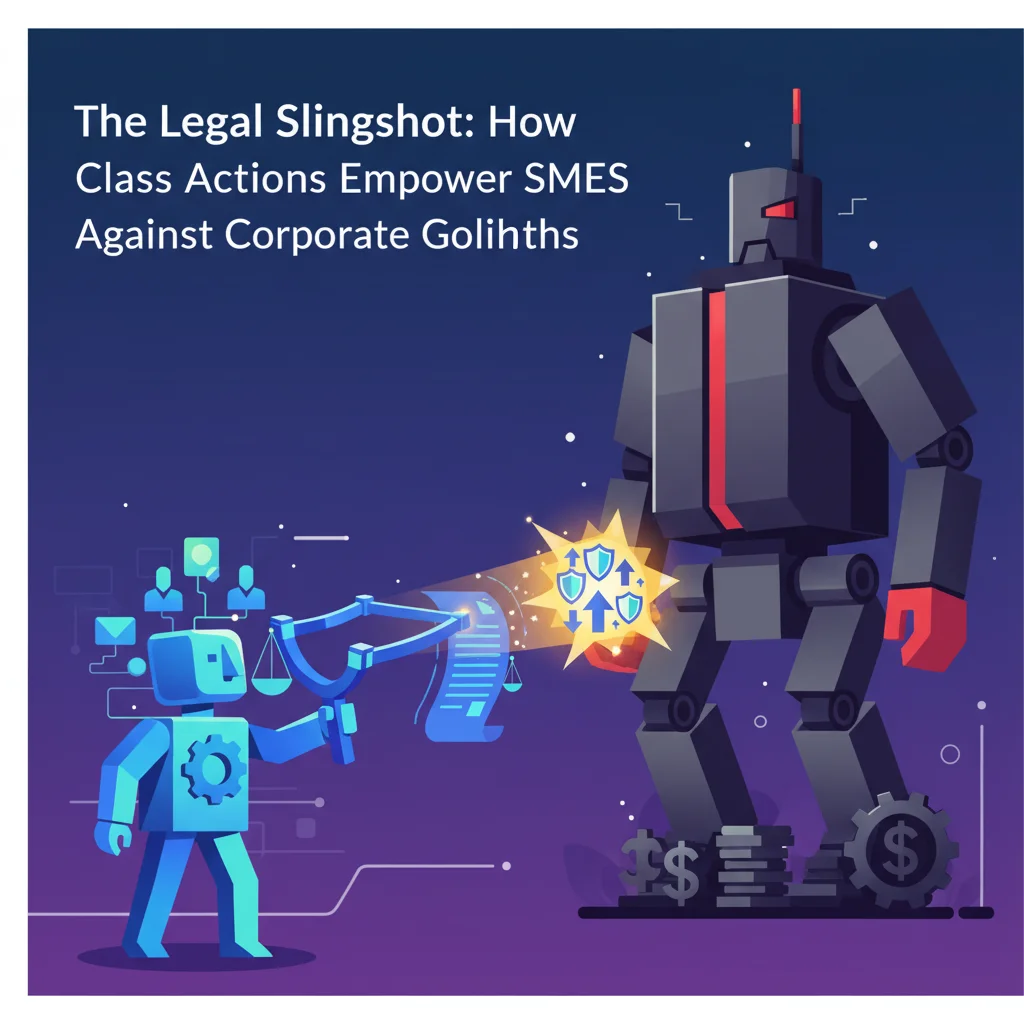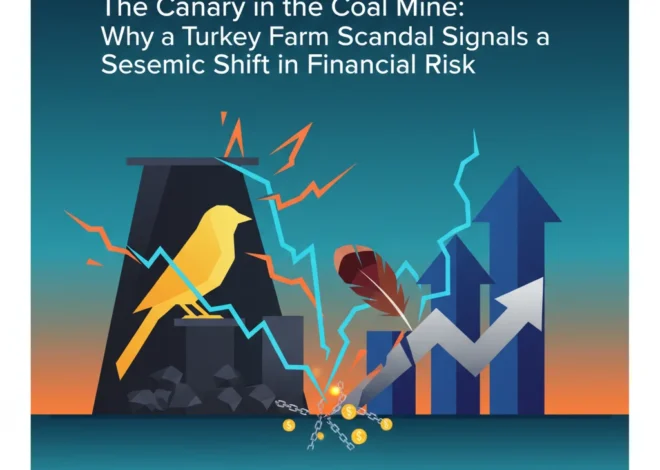
The Legal Slingshot: How Class Actions Empower SMEs Against Corporate Goliaths
In the modern economy, the narrative is often one of David versus Goliath. A small or medium-sized enterprise (SME), brimming with innovation and ambition, finds itself competing against a multinational corporation with seemingly infinite resources. But what happens when the competition isn’t fair? What recourse does an SME have when a corporate giant engages in anti-competitive practices, manipulating markets and stifling smaller players? For many, the answer has traditionally been “very little.” The sheer cost of mounting a legal challenge against a behemoth with a legion of in-house lawyers is a barrier so high it seems insurmountable.
This power imbalance threatens the very fabric of a dynamic market economy. However, a powerful legal and financial mechanism is shifting the balance: the collective action regime, often referred to as a class action lawsuit. As highlighted in a recent letter to the Financial Times by Anthony Maton, Global Co-Chair of law firm Hausfeld, this system is a “crucial avenue for SMEs” to seek justice. It’s a legal slingshot that allows thousands of smaller voices to band together into one powerful, undeniable force.
This article delves into why the collective action regime is more than just a legal tool; it’s a fundamental pillar of market fairness, a deterrent to corporate malfeasance, and a fascinating intersection of law, finance, and economics.
The Anatomy of an Unfair Fight: The SME’s Dilemma
Imagine you run a successful import-export business. You discover that the major international banks you rely on for foreign exchange (FX) services have been colluding for years to manipulate currency rates, costing your business tens of thousands of pounds annually. You have been wronged. The damage is real. But the perpetrators are some of the largest financial institutions in the world.
The cost of hiring a top-tier legal team, commissioning expert economic analysis, and navigating years of complex litigation could easily run into the millions. For a single SME, this is a financially impossible proposition. The potential recovery, while significant for your business, is dwarfed by the upfront cost and risk. This is the classic dilemma that has allowed anti-competitive behaviour to go unchecked for decades. The economics of litigation have historically favoured the large corporation, creating an environment where wrongdoing can be seen as a calculated, and often profitable, business risk.
This isn’t just a problem for individual businesses; it has a corrosive effect on the entire economy. When cartels or monopolies can operate with impunity, it leads to:
- Reduced Innovation: Smaller, more agile companies are often the engines of innovation. If they are squeezed out by unfair practices, the whole market stagnates.
- Inflated Prices: Anti-competitive behaviour, such as price-fixing, ultimately harms consumers and other businesses who are forced to pay more for goods and services.
- Market Inefficiency: A healthy stock market and a robust economy rely on fair competition. When the playing field is tilted, capital is not allocated efficiently, and investor confidence can erode.
Enter the Collective: How Class Actions Level the Playing Field
The collective action regime fundamentally changes the economic equation of justice. Instead of one SME bearing the entire burden, a single representative can bring a claim on behalf of a whole class of affected businesses. In the UK, the Competition Appeal Tribunal (CAT) has become the primary venue for these large-scale competition claims. It provides a specialized forum designed to handle the complexities of antitrust litigation.
This “opt-out” system, which is common in the UK for competition claims, is particularly powerful. It means that all affected UK businesses are automatically included in the class unless they actively choose to opt out. This instantly creates a claimant group with the scale to make the lawsuit economically viable and present a credible threat to even the largest defendant. Suddenly, a claim worth £50,000 to one SME becomes a consolidated claim worth hundreds of millions of pounds from thousands of businesses. This is the power of the collective.
To illustrate the dramatic shift in financial dynamics, consider the following comparison:
| Factor | Standalone SME Lawsuit | Collective Action Lawsuit |
|---|---|---|
| Upfront Legal & Expert Costs | Prohibitively high (often £1M+), borne entirely by the SME. | Zero. Costs are covered by a third-party litigation funder. |
| Risk of Adverse Costs | Extremely high. If the SME loses, it must pay its own costs plus the defendant’s (potentially millions). | None for the class members. The funder takes on this risk, often covered by After-The-Event (ATE) insurance. |
| Bargaining Power | Minimal. The defendant has little incentive to offer a fair settlement. | Massive. The scale of the claim forces the defendant to the negotiating table for a serious settlement. |
| Access to Top-Tier Experts | Limited by budget. | Access to the best lawyers, economists, and forensic accountants, funded by the litigation backer. |
The Financial Engine: How Litigation Funding Fuels Justice
The collective action model would not be possible without a crucial catalyst: third-party litigation funding. This has become a sophisticated corner of the finance world, where specialized investment funds provide the capital needed to pursue large, complex claims. In essence, they are venture capitalists for lawsuits.
Here’s how it works: A litigation funder assesses the merits of a potential case. If they believe it has a high probability of success, they agree to finance the entire legal process. This includes lawyers’ fees, court costs, and expert witness fees. In return for taking on all the financial risk, the funder receives a percentage of the final settlement or award if the case is successful. If the case loses, the funder loses their entire investment, and the businesses in the class owe nothing.
This model has turned access to justice into an investable asset class. For investors, it offers high-potential returns that are uncorrelated with the traditional stock market, making it an attractive diversification tool. The growth of this industry has been a game-changer, unlocking the courthouse doors for countless SMEs who were previously shut out. The evolution of financial technology, or fintech, is also playing a role, with emerging platforms aiming to democratize investment in legal cases and streamline the management of claims.
From Pop Icon to Portfolio Risk: The Unseen Economics of Brand Beckham
Case Study: The Foreign Exchange Cartel and its Aftermath
The abstract concepts of cartels and collective action become crystal clear when examining the real-world case of the foreign exchange (FX) spot market manipulation. Over several years, traders at major global banks—including Barclays, HSBC, and RBS—used online chatrooms with names like “The Cartel” and “The Mafia” to collude and rig currency rates for their own profit. This misconduct led to billions in fines from regulators worldwide.
But regulatory fines don’t compensate the victims. That’s where collective action comes in. A UK class action lawsuit, the very one referenced by Anthony Maton, was certified by the Competition Appeal Tribunal to recover damages on behalf of businesses and investors who were harmed by this manipulation. It combines the claims of thousands of entities, from large pension funds to everyday SMEs, that engaged in FX trading during the period of the cartel’s operation.
Without the collective action framework and the backing of litigation funders, it would be impossible for these SMEs to take on a syndicate of the world’s most powerful banks. This case is a landmark example of the regime working as intended: holding powerful actors to account and providing a practical mechanism for the recovery of losses for those at the bottom of the financial food chain.
The Investor's Crossword: Decoding the Puzzles of the Modern Economy
The Broader Impact: Why This Matters for the Entire Economy
The importance of a robust collective action regime extends far beyond compensating victims in a specific case. Its true value lies in its power as a deterrent. When corporate boards know that there is a viable and well-funded mechanism for their victims to seek redress, the risk-reward calculation of engaging in anti-competitive behaviour changes dramatically. The potential cost is no longer just a regulatory fine, but a massive civil damages award that could significantly impact the company’s stock market valuation and financial stability.
This fosters a healthier and more competitive marketplace, which benefits everyone:
- For Investors: It promotes better corporate governance and risk management, leading to more stable and ethical companies. A market with strong enforcement mechanisms is a more attractive place for long-term investing.
- For the Economy: It ensures a level playing field where companies succeed based on merit, innovation, and efficiency—not through illegal collusion. This drives productivity and economic growth.
- For Financial Technology & Banking: It pushes the industry towards greater transparency and fairness, which is essential for maintaining trust in the financial system, from retail banking to institutional trading.
In conclusion, the fight for a fair market is an ongoing battle. While large corporations will always have significant resources, the evolution of legal and financial tools like the collective action regime and litigation funding have provided SMEs with a powerful slingshot. They ensure that in the world of business, it’s not just the size of your legal budget that determines justice, but the merits of your case. For business leaders, investors, and anyone who believes in a fair economy, supporting and understanding these mechanisms is not just important—it’s essential.


